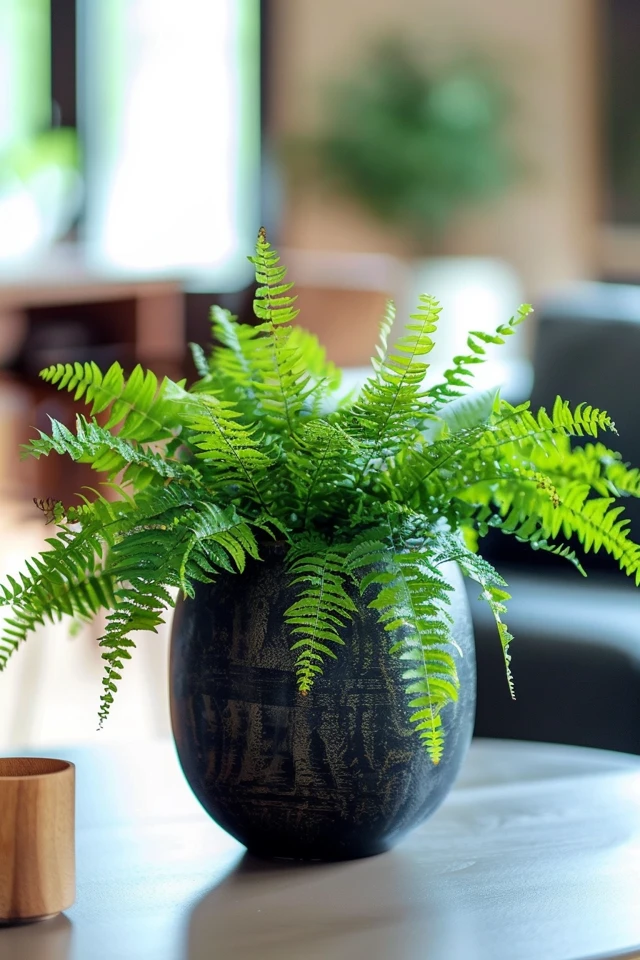Repotting your ferns is an essential step in keeping them healthy and thriving. It provides them with the space and nutrients they need to grow. Spring is the ideal time to repot, as the plants are coming out of their winter dormancy and ready for growth.
Repotting annually is recommended for younger plants, while more established ones can be repotted every other year. Repotting also helps address health issues such as root rot and soil-borne pests. Using a well-blended soil mix specifically designed for ferns can greatly benefit their growth. Soil.Ninja offers premium fern soil mixes that are tailored to the needs of these plants.
When repotting, it’s important to be gentle with the delicate root systems of ferns. Adding a layer of clay pebbles and fern soil to the new pot, placing the plant in, and backfilling with more fern soil will provide the necessary moisture retention for healthy root growth.
- Repotting ferns is crucial for their health and growth.
- Spring is the ideal time to repot ferns.
- You can repot younger ferns annually and more established ferns every other year.
- Using a well-blended soil mix designed for ferns is important.
- Soil.Ninja offers premium fern soil mixes tailored to ferns’ needs.

The Importance of Repotting for Indoor Plants
Repotting indoor plants is crucial for their overall health and growth. It involves changing the soil or potting mix rather than replacing the planter itself. Fresh soil provides new nutrients that the plants need to thrive. When selecting a new planter, it’s important to choose one that is only slightly larger in diameter than the current one to prevent overwatering.
Signs that a plant may need repotting include roots growing through the drainage holes, slow growth, top-heaviness, and the need for more frequent watering. The repotting process involves carefully removing the plant from its current container, loosening the roots, removing old potting mix, adding fresh potting mix to the new container, and watering thoroughly. Following these steps will ensure that indoor plants, including ferns, have the necessary space and nutrients to flourish.
If you’re unsure about repotting your indoor plants, consider the benefits it brings. Repotting provides plants with ample room to spread their roots and grow. It also helps prevent root-bound conditions, where the roots become tightly packed in a small pot, hindering growth and nutrient absorption. Additionally, repotting allows you to inspect the health of the root system, potentially identifying and addressing issues such as root rot or pest infestations.
“Fresh soil provides new nutrients that the plants need to thrive.”
Remember, different types of indoor plants may have specific needs when it comes to repotting. Ferns, in particular, require a well-blended soil mix that retains moisture without becoming too claggy. Finding the right balance is key to their successful growth and development.
Creating a suitable environment for your indoor plants through repotting not only contributes to their aesthetic appeal but also ensures their longevity. By providing fresh soil and adequate space, you give your plants the best chance to thrive and bring greenery and vitality into your living space.
Next, we’ll explore some essential tips for successfully repotting ferns, as they require specific care and attention to keep them vibrant and healthy.

Tips for Successful Repotting of Ferns
Successfully repotting ferns is essential for their overall health and growth. Follow these tips to ensure your ferns thrive after repotting:
1. Choose the Right Soil Mix: Select a well-blended soil mix specifically designed for ferns. It should retain moisture without becoming too claggy, providing the ideal growing conditions.
2. Handle with Care: When repotting, gently remove the fern from its current pot, taking care not to damage the delicate root system. Loosen the roots and remove any old potting mix, making sure to leave the thicker roots intact.
3. Add Fresh Potting Mix: Place the fern in the new pot and add fresh potting mix. Create a layer of clay pebbles and fern soil at the bottom of the pot to aid moisture retention. Backfill the pot with more fern soil, ensuring the roots are well-covered.
4. Water Thoroughly: After repotting, water the fern thoroughly to settle the new soil and provide necessary moisture. Maintain regular watering to help the fern establish itself in its new pot.
5. Divide if Necessary: For very large ferns, consider dividing them into sections using a clean knife. This allows for better root development and prevents overcrowding.
By following these tips, your ferns will stay healthy and continue to thrive after repotting. Remember to keep an eye on their watering needs and enjoy the refreshed greenery in your home or garden!


